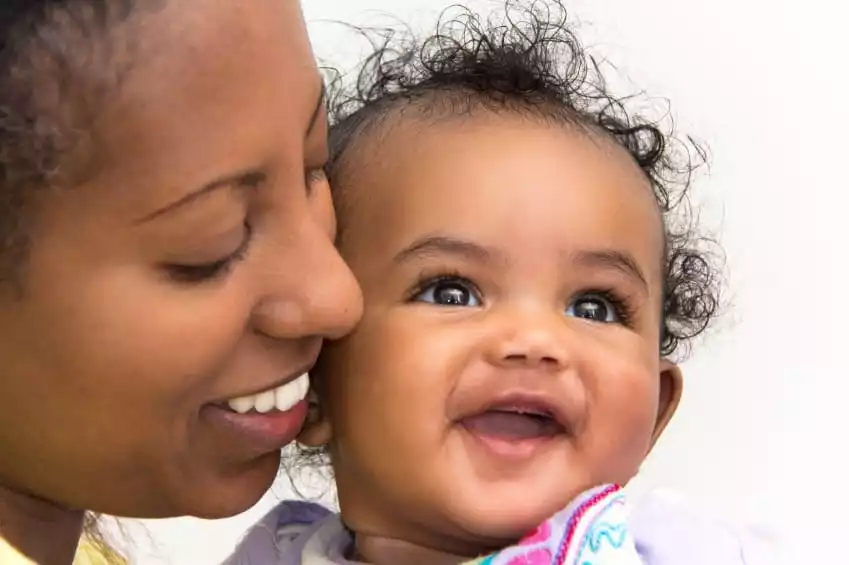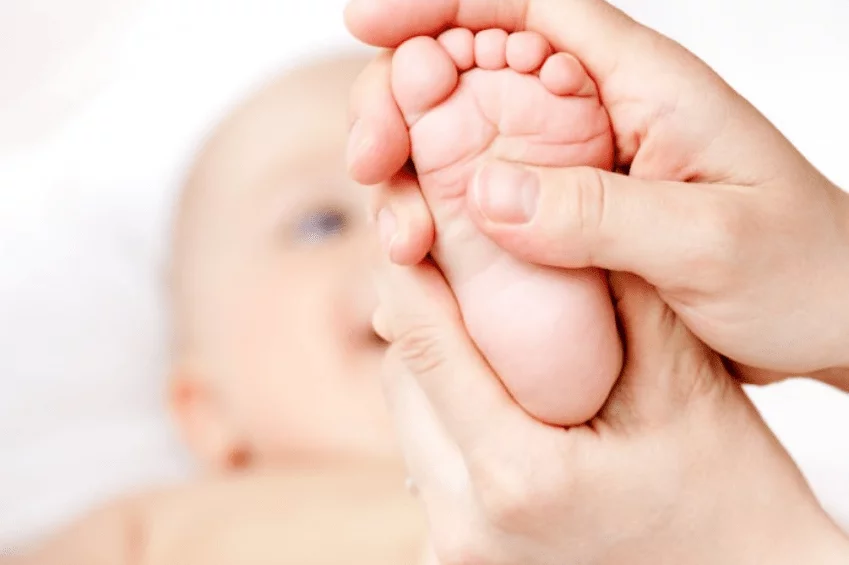
August is National Psoriasis Awareness Month, and we want to do our part in helping people raise awareness of this complex, immune-mediated disorder by exploring ways to calm and treat pediatric psoriasis.
Some people first develop signs of psoriasis in infancy shortly after birth, while others don’t experience symptoms until well into adulthood. This year, we’re focusing on pediatric psoriasis and to help parents help their kids feel more comfortable and confident – even during the very worst flares.
What is Psoriasis?
First, let’s talk about what psoriasis is – and what it isn’t.
At its most basic definition, psoriasis is a skin condition that causes skin cells to regenerate at a faster rate. While this might sound ideal, the old, dead skin cells pile up, creating silvery scales and plaques. This leads to itching, inflammation, cracks in the skin, and rarely, even secondary infection or systemic inflammation and illness.
Psoriasis falls into a few different categories depending on how the disease manifests:
1. Plaque Psoriasis
This is the most common form of psoriasis, especially in children. It produces the classic plaques and silvery scales most people associate with the disease. Flares may be mild and almost unnoticeable, or they may be severe, covering most of the body.
2. Guttate Psoriasis
Guttate psoriasis (sometimes referred to as eruptive psoriasis) is another manifestation of the disease. It produces small lesions that generally remain on the trunk and upper torso. However, they may manifest on the legs and arms, too. It is far more common in teens than other forms.
3. Inverse Psoriasis
Inverse psoriasis (sometimes referred to as intertriginous psoriasis) is similar to plaque psoriasis. However, it only manifests in skin folds and darker, damp areas of the body, such as the groin, armpit or under the breasts. Lesions can be bright red, very painful, and very inflamed.
4. Pustular Psoriasis
Pustular psoriasis is rare and often mistaken for other conditions, such as acne. It manifests as tiny, whitehead-like, pus-filled bumps that burst under pressure, releasing white blood cells and lymph fluid. These bumps generally appear on the hands, feet, and arms rather than the face, torso, or trunk.
5. Erythrodermic Psoriasis
The erythrodermic version of psoriasis is fairly rare; however, it is also much more dangerous. During flares, patients may develop large, peeling rashes across nearly all of the body. Because so much of the surface of the skin is affected, it can be intensely painful and itchy. Infection risk is also very high, which is why patients are sometimes hospitalized temporarily during especially bad flares.
6. Psoriatic Arthritis
Although researchers don’t yet fully understand why this happens, psoriasis does sometimes seem to affect other areas of the body rather than just the skin. Up to 30 percent of all patients diagnosed with at least one other type of psoriasis will go on to develop psoriatic arthritis. Joints (especially around the spine, neck, knees, and hips) become red and inflamed, which leads to swelling and joint destruction over time.
Most patients who suffer from psoriasis experience only very mild symptoms; in fact, many children never even realize they’ve had a flare at all! For those who do suffer from pediatric psoriasis with one or more of the symptoms on this list, the right treatment can make a world of difference. Early treatment can help slow progression.
We’ll tell you about a few of the best options for pediatric patients in the next few sections.
How to Calm Pediatric Psoriasis
If you believe your child is suffering from psoriasis, the first step is to seek a diagnosis. It’s important to be certain because the symptoms associated with pediatric psoriasis can, and often do, overlap with symptoms from eczema, allergic dermatitis, and a few other milder conditions.
Once you have a diagnosis, you have a broad range of treatment options available to help your child recover.
2. Home Remedies
Because some of the available treatments for pediatric psoriasis come with the potential for side effects, you may wish to try home remedies first. This is an appropriate response only when symptoms are mild and tolerable. Always check that there are no signs of worsening over a short period of time.
Try:
- Oatmeal baths: to help soothe inflamed skin and restore natural moisture balance. Just add a cup or two of colloidal oatmeal (available at most pharmacies) to a warm tub full of water. Allow it to disperse and bathe your child as normal. Colloidal oatmeal works because it contains anti-inflammatory compounds. This is also a great option for other skin conditions, such as sunburn or dermatitis, too!
- Aloe vera: may help to soothe itching and moisturize the skin, preventing cracks, in very mild cases. However, it should be tested with care in very young children as the risk for allergies is always present. If your child tolerates it, this can be a great option for maintenance even in the presence of other treatments containing medication.
- Epsom salts: in the bath may help to draw out inflammation and reduce redness. However, they should be avoided in children under the age of six due to the risk that swallowed bath water may induce mild diarrhea. You can also soak a washcloth in warm water saturated with epsom salts and gently compress it over a small area of the skin.
- Apple cider vinegar: does seem to relieve symptoms and redness in some people, especially for plaque psoriasis. However, there is a small risk that it may cause stinging or burning when used topically. Test it on your child if you want to explore this option, and stop immediately if they experience irritation.
Other options sometimes suggested for adults, such as tea tree oil or coal tar soap, should be used with extreme caution in pediatric psoriasis patients. Many of these substances are too harsh for a child’s sensitive skin, leading to further issues or pain.
2. Medicated and Advanced Treatments
If home remedies don’t work, or symptoms are too severe, you have the option to try more advanced therapies – including medication. These treatments can be categorized into three specific subsections:
- UVA/UVB light therapy
- Topical creams and salves
- Oral or injected medications
As a general rule of thumb, oral and injected medications typically consist of biologics or steroids. They are typically given only as a last resort for severe cases. For the purposes of this article, we won’t discuss these in-depth; instead, we’ll focus more on light therapy and topical medications.
Light Therapy
Light therapy may help children who are experiencing mild to moderate psoriasis. It works by stimulating Vitamin D production in the body which slows cellular turnover rates. Your doctor may suggest brief exposure to the sun, or they may suggest using a light wand over specific areas of the body, such as the scalp or hands.
This option should be used with caution, as too much exposure can actually worsen psoriasis over time.
Topical Therapy
Topical therapies for psoriasis include salicylic acid, coal tar, vitamin D analogues that slow cellular turnover, salves that moisturize and soothe the skin, and topical steroids. All of these options are useful for different manifestations of the disease. For example, salicylic acid works well for scalp psoriasis, but isn’t necessarily the best option for psoriasis plaques on the face.
While topicals are considered “first line,” they can be messy, difficult to apply, and hard to “get right.” Children also often need reduced doses (especially for topical steroids) to reduce the risk of side effects, and convincing a four year old to let you apply multiple topicals every single day can become a significant source of stress for everyone involved.
Pediatric compounding pharmacies can help you customize your child’s medication, either by combining medications or removing certain ingredients, to better target your child’s symptoms while also lowering the risk for side effects. If you must use medicated topicals, this is by far the best way to do so.
Conclusion
As a parent, you have a major role to play in your child’s attitude towards psoriasis, especially when it comes to confidence and feeling secure. Do your best to avoid negative reactions and treat the disorder as no different than a scratch or cut – it needs attention and care, but isn’t “gross” or “yucky!”
If you still have questions about pediatric psoriasis, contact your local pharmacy today!

 info@burtsrx.com
info@burtsrx.com

